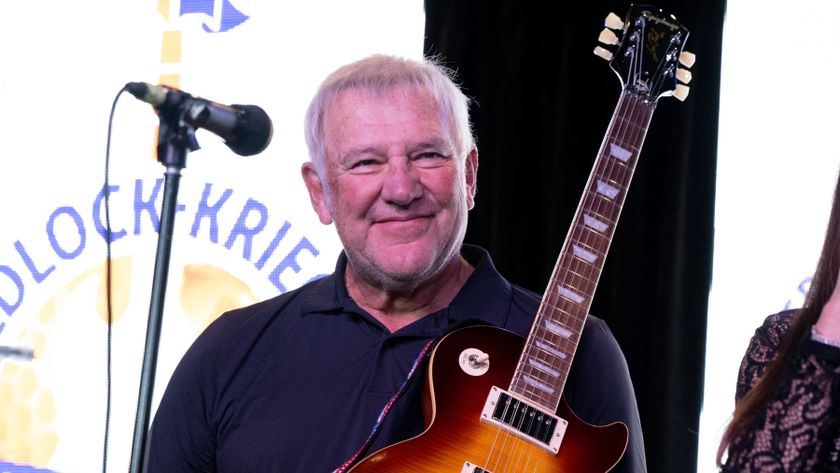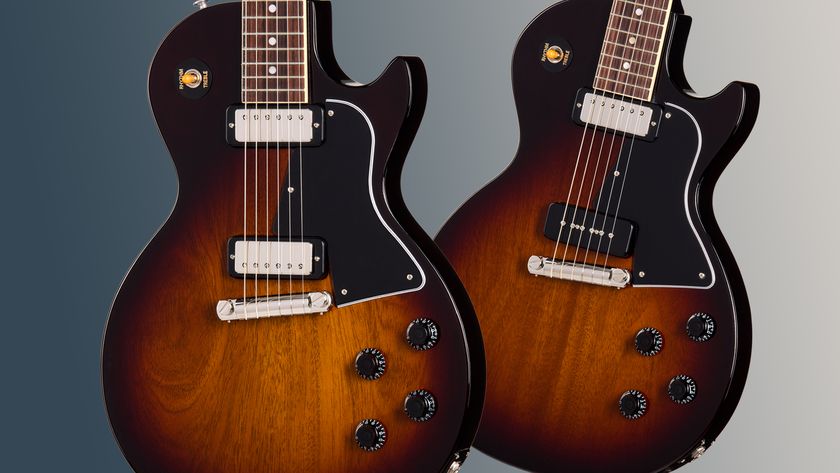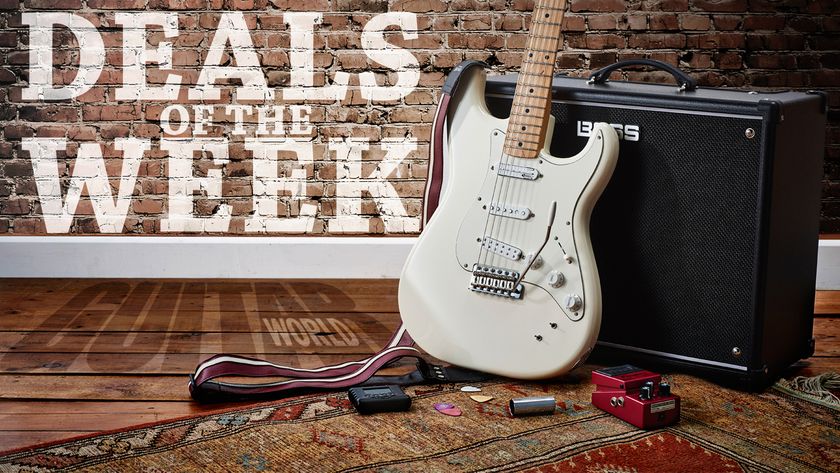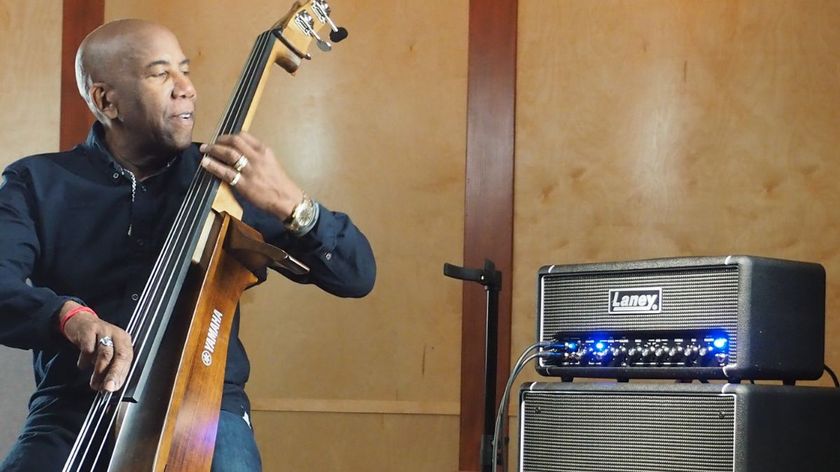Devin Townsend explains why "Les Pauls look s**t on me"
The prog-metal maestro also revealed why he prefers digital gear to analog in a new interview with Total Guitar

For the last few years, eclectic electric guitar virtuoso Devin Townsend has been a Framus man, leaning primarily on his signature guitar, the Stormbender.
In a recent interview with Total Guitar, Townsend revealed that the Stormbender was designed to channel the Gibson Les Paul Custom, with aesthetics and build more along the lines of the prog-metal maestro's taste.
“I still occasionally bring out my white Les Paul Custom,” Townsend said, “But the problem with Les Pauls is they look shit on me!
"On some people they look fantastic," the prog-metal maestro explained. "When you see Joe Perry or Slash holding a Les Paul you think, ‘Damn, that’s a match made in heaven!’ I already look like a dork so if you add a guitar that’s too small for my stature, it looks awful!”
The Stormbender, Townsend explained to Total Guitar, was "about replicating that sound but with a shape closer to something I could get behind."
"One major difference is the scale length," Townsend said. "My Framus is 25” because I mainly play in open tuning with 10-52 gauge strings. The Gibson scale length would feel a little shaky tuned down like that. The pickups are my signature set that I designed with Larry Fishman some years ago, which have a bit more chewiness and less compression compared to the regular Fluence Moderns.”
Elsewhere in the interview, the ever-adventurous guitarist revealed why he – like many other tone hounds – has gone digital.
Get The Pick Newsletter
All the latest guitar news, interviews, lessons, reviews, deals and more, direct to your inbox!
“It’s funny, when you ask people about their favorite amp, the acceptable responses are always the cork-sniffin’ ones like the Dumble or some Super Overdrive that’s been hidden away since 1956,” Townsend said with a laugh. “And you’re allowed to say that, because that’s sexy. But if you go around telling people it’s an Axe-Fx, people go, ‘That’s sacrilege!’
"My whole workflow," he continued, "includes tailoring sounds to suit the music I write. When I’m done, the sounds I’ve created are perfect for that song. When producers ask me to re-do it through some hissy old amplifier, I’ll go down that rabbit hole but I always come back to digital because it’s clean and I can control it. What people find problematic with the Axe-Fx is that it gives you all the options to make something fantastic or monumentally shit. It’s up to the user.”
To read the full interview with Townsend – which also covers his new album, Lightwork, his formative time with Steve Vai, alternate tunings and more – pick up a copy of the latest issue of Total Guitar via Magazines Direct.
Jackson is an Associate Editor at GuitarWorld.com. He’s been writing and editing stories about new gear, technique and guitar-driven music both old and new since 2014, and has also written extensively on the same topics for Guitar Player. Elsewhere, his album reviews and essays have appeared in Louder and Unrecorded. Though open to music of all kinds, his greatest love has always been indie, and everything that falls under its massive umbrella. To that end, you can find him on Twitter crowing about whatever great new guitar band you need to drop everything to hear right now.

“It’s a whole new generation in sound. There’s nothing lacking”: Alex Lifeson reveals the gear that has finally converted him to digital modeling

“The Strat is the most versatile electric guitar that there is; but the Les Paul is a perfect instrument”: Sting guitarist Dominic Miller weighs in on the Strat vs. Les Paul debate – says the Strat loses despite being a more versatile instrument









